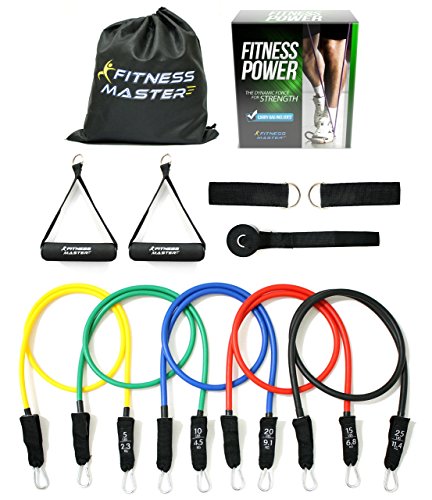You’ve got a lot going on, but you still want to take care of yourself. You don’t need an abundance of time to achieve great results with strength training; just proven guidelines.
Many women find themselves at the end of their to-do list. They’re focused on their careers, taking care of kids or loved ones, putting the needs of others before their own, or simply doing things they enjoy more than going to the gym.
Free time is scarce.
And — now understand I mean this void of the typical condescending tone it’s delivered — but, that’s no excuse. There’s a reason flight attendants tell you in the event of an emergency and oxygen masks deploy you should secure your mask first before assisting someone else. Likewise, you can’t take care of others to the best of your ability if you’re not the healthiest, strongest version of yourself.
“If you think taking care of yourself is selfish, change your mind. If you don’t, you’re simply ducking your responsibilities.” -Ann Richards
That may sting a bit, but taking care of yourself isn’t optional. You can’t delegate the responsibility to someone else. Even with limited time you can reap rewards, and I’ll show you how. Because strength training provides numerous benefits, it’s one of the best activities you can do to achieve results without a lot of time: it’s efficient. But you must follow some guidelines.
Or perhaps you’re thinking, “Shut up, Nia, I know taking care of myself is important. I just don’t want to spend more time than necessary at the gym or thinking about food because I have other interests I’d rather engage in.”
This is for you, too.
Workout Tips for the Busy Woman
Strength training provides numerous benefits (builds muscle, burns fat) so that’s what we’ll discuss here. Bottom line: if time is limited, spend it on strength training.
1. Purge the typical “I have to do all of this, all the time” from your mind. Maybe when you were younger or before you had kids you were able to work out for 60+ minutes a few days per week, and now that you don’t have that option, you think there’s no sense in working out for only 30 minutes. “I’d only have half an hour once I got to the gym, so what’s the point in even going?” or “I can only make it to the gym twice per week; there’s no way that’s enough” are common objections.
But they’re incorrect. It’s not about how much time you have, but what you do with it that counts. When time is short you can’t waste it on the minutiae — sadly this is a trap many find themselves. You must focus on the few BIG things that produce the majority of the results. Resist the urge to nit-pick the small things.
Example 1:
- Big thing: I will strength train 2-3 times per week. (Yes! Do this — you’ll see how below.)
- Small thing: Is it optimal to work out earlier or later in the day? (No. Don’t focus on this; it’s insignificant. But the answer: whatever is most convenient.)
Example 2:
- Big thing: I’m going to eat at least .7-.9 grams of protein per pound of bodyweight. (Yes. Do it.)
- Small thing: I’m going to debate whether I should eat an apple or strawberries (No. This is a waste of mental energy. Both are good and anyone who says to avoid bananas or something equally preposterous is contributing to the bullshit plaguing health and fitness. You have better things to do with your time than get sucked into such nonsense. This isn’t just a “small” thing — it’s a stupid thing.)
Example 3:
- Big thing: I’m going to get a minimum of 7 hours of sleep every night. (You’re smart to do this. Many people grossly underestimate the value of sufficient sleep.)
- Small thing: Should I eat three or four meals per day? (Nope. Small thing. And the right answer is: whatever you prefer and will adhere to long-term.)
2. Don’t worry about what anyone else is doing. This is your journey. It’s tempting to compare ourselves to our friends or other women at the gym or fit pros on social media. Don’t do it. This is your journey. Another woman’s body is not your measuring stick for success. There are simply too many different body shapes, anthropometry considerations, and genetic factors to make comparison even the least bit productive.
3. Big, compound exercises first. If you have limited time, make it count. Use large, multi-joint exercises like push-ups and presses, rows and pull-ups, squats, lunges, and deadlifts. You’ll reap greater benefits from getting stronger (more on this below) with compound exercises than you will doing exercises like triceps kick-backs, leg extensions, and other single-joint exercises. The former provides most the results, so they deserve your effort.
4. Stick with total body workouts. This way you train each muscle group frequently; if you don’t have much time to train, this is imperative. Include a lower body exercise (e.g., squats, lunges), upper body push (e.g., low incline bench press, barbell press), and upper body pull (e.g., pull-ups/cable pull-downs, dumbbell row). When you follow that triple-exercise format you can achieve terrific results with just three exercises per workout.
5. Quality. A common mistake people make is rushing through their workout. If you’re going to do it, do it right. Give weight training the respect it deserves. Make every rep count. Put as much effort and focus into the first rep of a set as the last.
Even if you only have 15 minutes you can create a training effect. You’ll need to keep rest periods to a minimum; using circuits (exercises performed in alternating fashion) as opposed to straight sets (performing all sets of an exercise on its own before moving on to other exercises in the workout) will give you maximum benefits in minimum time.
Here’s a sample circuit:
- Squat x 8 reps
- Dumbbell bench press x 8 reps
- Dumbbell row x 8 reps per arm
Perform each exercise one after the other, and only rest as needed. Perform a total of 3-4 circuits. You should be able to complete 3-4 circuits in 15 minutes if you keep rest periods brief. You’ll be breathing hard, but you’ll experience how effective a quick, high quality strength training session can be.
6. Improve your performance. Every time you repeat a workout you must do a little better. Perform at least one more total rep for each exercise, or increase the weight. If time is at a minimum you can decrease rest periods between exercises or circuits. Gradual, consistent performance improvement is mandatory. This is why you need to keep a workout log so you can see your progress as it unfolds and know what you must do to progress.
7. Schedule workouts on most convenient days. I recommend taking a day off between total body workouts. For example: perform a workout on Tuesday, Thursday, and Saturday. Or if you can only work out twice per week, something like Tuesday and Saturday. But if you know the only days you’ll actually commit to working out occur in a row, like Saturday and Sunday, that’s what you must work with.* You’ll achieve greater results making due with what you have to work with than waiting for your schedule to be “ideal” or less chaotic.
Set yourself up for success. Schedule workouts when you know you’ll do them, and this may change with your schedule.
8. Supplement with bodyweight workouts. Maybe you can’t devote 20 minutes to drive to the gym, wait for equipment to become available, do your workout, and drive 20 minutes home. Before you know it, what should’ve been a 30-minute workout turned into a 2-hour event.
If you don’t have a home gym, this is when bodyweight workouts are extremely useful. If you can only devote 1-2 workouts to the gym each week, perform a third bodyweight workout at home. It doesn’t need to be fancy:
- Reverse lunges
- Push-ups
- Glute bridge
- Inverted rows
Perform those exercises as a circuit. Either perform 2-4 circuits or set a timer for 10-20 minutes and perform as many circuits as possible. Each time you repeat the workout either a) perform more reps for each exercise, b) complete more total circuits or, c) perform the same number of circuits in less time.
You can find more bodyweight exercises and their progressions in this article.
9. Got extra time? Sprinkle in additional isolation exercises. Compound exercises should be performed first, but days that provide extra time are a good opportunity to include additional exercises, like isolation exercises for extra work on body parts you want to prioritize.
Want to give direct attention to your arms? Perform a few sets of dumbbell curls and lying extensions at the end of the workout. Want to boost your glutes? Add in single leg hip thrusts. Want to keep your shoulders healthy? You can’t go wrong with face-pull variations or band pull-aparts.
This extra work is just a bonus; great if you have the time, but not mandatory.
The Busy Woman’s Strength Training Programs
Now that you know what to do, here are some great strength training programs to get you started:
- New to strength training? Start with The Women’s Beginner Strength Training Program.
- Can you only devote two days* to the gym? No problem. Use the Two Day Per Week Strength Training Program.
- Can you commit to three workouts per week? Use The Ultimate Lift Like a Girl Workout Template.
- Need bodyweight workouts you can do at home? Check out these 7 bodyweight exercises and their progressions.
*Two workouts per week or doing two workouts back-to-back: is it “perfect”?
Screw “perfect”; it’s about what’s practical and sustainable long-term for you. The best workout program or eating regimen you can follow is the one you’ll adhere to for months and years, even if that means “only” strength training twice per week. Two workouts per week over the course of a year is 104 workouts. That’s a hell of a lot better than zero. Don’t let the desire of perfection distract you from what’s doable.
The Busy Woman’s Nutrition
Strength training is important; so is nutrition. Since you’re short on time you don’t want to waste more of it than necessary thinking about, and preparing, food. Here are some helpful tips.
Nourish your body so you can thrive. Too many women go into a “survival mode” mindset with eating. The goal, they think, is to eat as little as possible or find ways to diet harder, eat less, and trick themselves with other “diet hacks.” Don’t do this. If you are doing it, stop. Stop right now.
If you’re a busy woman and you’re participating in a challenging, progressive strength training program, you need to be fueled to perform at your best, and to recover from your activities. (And, no, you do not have to “earn your food.”)
Eat mostly minimally processed, real food. This is a key guideline proven to promote health and help stave off disease, and it’s backed by science. Nuts and seeds, beans and legumes, whole grains, fruits and vegetables, meat, poultry, fish, dairy, eggs, etc. These foods (unless you have an allergy, doctor’s orders to eat a certain way, or are vegetarian, vegan, etc.) should comprise most of your meals and snacks.
Ignore resources that claim a single food group (e.g., whole grains) or macronutrient (e.g., carbs, fat) is to be avoided or solely to blame for fat gain. Such statements get attention but are founded on cherry-picked, or just outright horrible, information. (Not to mention, there’s some product they sell that provides “the solution.”)
Get enough protein. Some women are shocked when they discover how little protein they consume. Start aiming for a minimum of .7 grams per pound of bodyweight or up to 1 gram per pound. (If you have excess weight to lose, this amount should be closer to a bodyweight you’d like to get closer to.) Get most of this from real food, but protein powder can be useful for convenience and to supplement your protein intake.
A couple months ago I starting using protein powder from True Nutrition — their protein is tested from a third party to assure quality. (You can get 5% off your purchase if you use the promo code “liftlikeagirl.” My favorites are whey protein isolate and pea protein isolate; I like to rotate them.)
Have fast-to-prepare meal options. Cook in bulk so you spend less time cooking and cleaning. Dedicate a couple hours per week (at the most convenient time, of course) to prep healthy foods (e.g., wash and cut up veggies). For example, I love omelets but I’m not going to spend time every morning washing, chopping and sautéing veggies, cooking the eggs, and cleaning up. You can simplify this by having the veggies already prepped or, during busy days, choose something quicker; I like oatmeal or my favorite smoothie most mornings. Also, use tools that make cooking convenient like a slow cooker or, my favorite, an Instant Pot.
The easier, more convenient foods and meals will always get eaten. Set yourself up for success by having them readily available.
What? That’s it? You bet your busy-butt that’s it. Unless you’ve been following those guidelines most of the time for several months, don’t request more information. Master the basics so they become habits; what you do because it’s part of your lifestyle and not something you have to actively think about. It’s like saying you’re going to host Thanksgiving dinner for your entire family when the only thing you can cook is a grilled cheese sandwich (and even it ends up charred half the time).
Stick to the basics, persevere, and you will be successful. “More” is not the solution and is often the reason people fail, because it was too much too soon and nothing stuck.
What If You Suddenly Have More Time?
Maybe your schedule varies: perhaps you go through periods where spare time is at a minimum, and then you have a phase it’s in greater supply. When you have extra time available, take advantage. Even if it’s a 30-day span, make the most of it. Perform three workouts per week instead of two, or conclude each workout with some extra isolation work. You may be surprised what you can accomplish with an intense focus in a short period of time.
Cover your bases with the strength training tips and nutrition guidelines above, and any extra you squeeze in is just a bonus. Remember: it’s not about how much time you have, but what you do with that time that matters most.
Sign up below to join the newsletter and you’ll receive the Beautiful Badass Mini Course as a gift.
The post The Busy Woman’s Guide to Strength Training appeared first on Nia Shanks.






